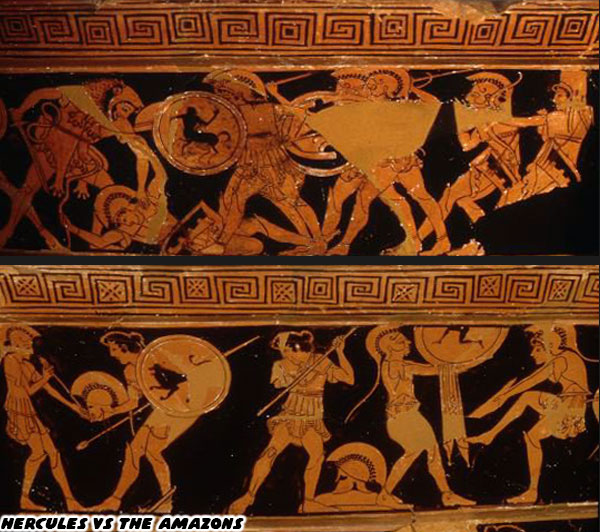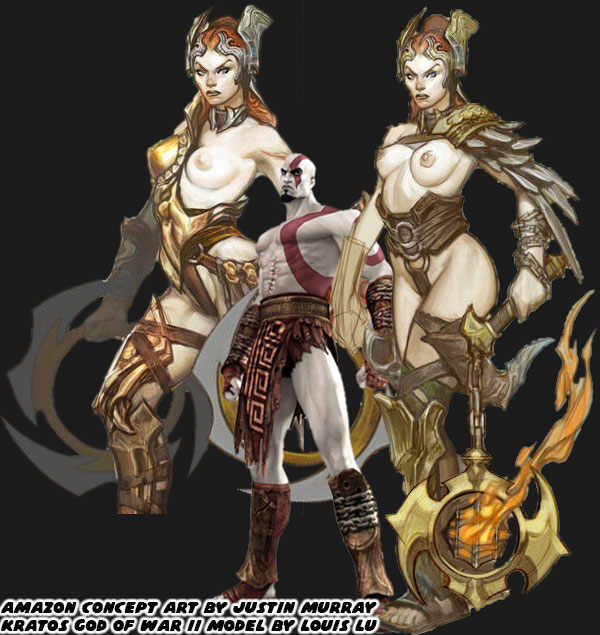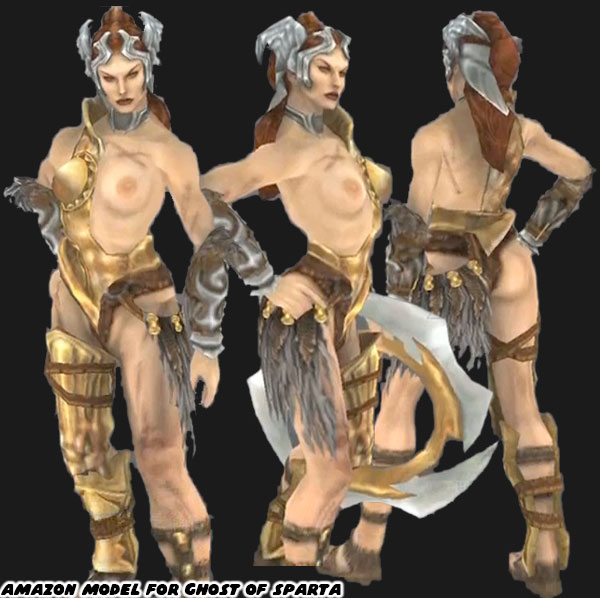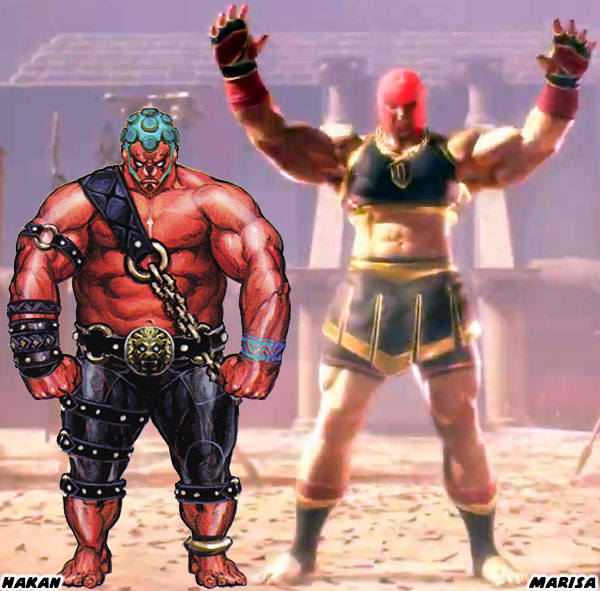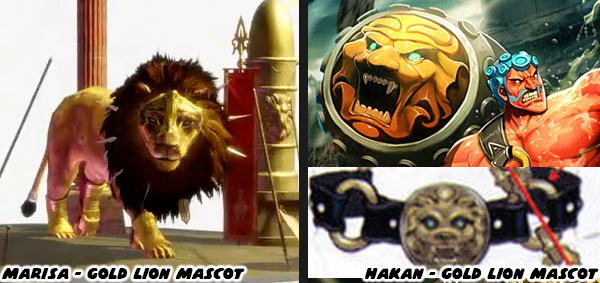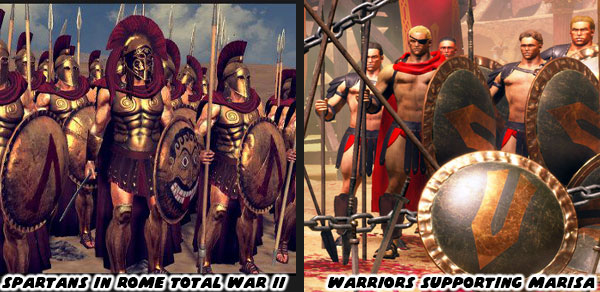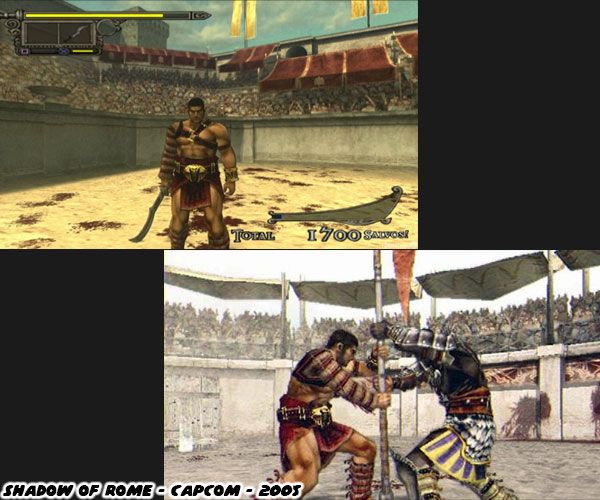Of all the God of War games, it was the third game that I enjoyed the least. That is not to say it wasn’t a good game. Far from it. I must have played through the game at least a dozen times, always picking up new details, and appreciating the work that went into it. God of War III elevated the status of Sony Santa Monica as one of the premier game developers around the world. They managed to take everything that made the GoW series memorable, and put it on the Playstation 3, while also raising the bar in terms of visuals, control, animation, and game play. The game picks up on the heels of the final cinema that played at the end of GoW II. We see Kratos standing on the shoulder of Gaia, as she, and her fellow titans are climbing Mount Olympus. The minions, and supporters are fighting the citizens, and servants of Olympus the entire way up. Zeus looks down from the peak along with his brothers Hades, and Poseidon. His son Hermes is there, and the god of the sun Helios is there as well. Zeus rallies the gods, and says they have faced worse odds before. They leap into battle, Hades sliding down the mountain with the use of his hooks. Hermes runs down the mountain. Helios summons his blazing chariot, and flies off into the sky. Poseidon jumps directly at Epimethus, and pierces his chest, sending the stone-like titan falling into the ocean below.
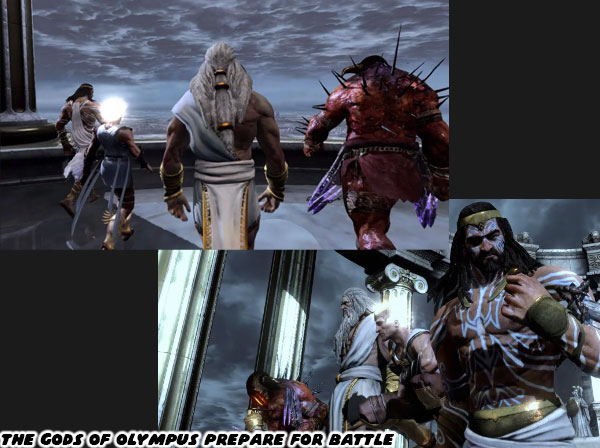
The game is visually stunning. For the first time the in-game graphics are as good, if not better, than the pre-rendered cut scenes from the first two titles. From this point forward every GoW cinematic would be rendered by the actual game engine, making every transition from story to game seamless. The levels would be massive, presented with greater fidelity than before. In many cases we would be able to see for miles, the usual “cheats” of having distant objects obscured by fog, or clouds wasn’t the case here. Also the stages could be dynamic. The battle within the Colossus of Rhodes was primitive compared to the movement of the stage while Kratos fights the defenders of Olympus while also climbing Gaia’s shoulder. Then later in the game the studio tops themselves once more by having Kratos fight Cronos as he tries to pluck the minuscule Ghost of Sparta off his craggy skin. Granted these amazing types of battles had been seen earlier in Shadow of the Colossus. They nonetheless were some of the most impressive fights in the history of gaming. In addition to going bigger, and better with everything that went into the encounters, the amount of detail had gone up exponentially for the characters. According to the developers “Kratos from God of War 2 (PS2) had 5,700 polygons for his entire body, 1,200 of those for the face and used five textures. Kratos from God of War 3 (PS3) had 64,000 polygons for his entire body, 5,700 for the face.” The move to new hardware, and storage space on the PS3 discs, plus DLC content, allowed Kratos to have different “skins,” or outfits rendered in perfect detail.
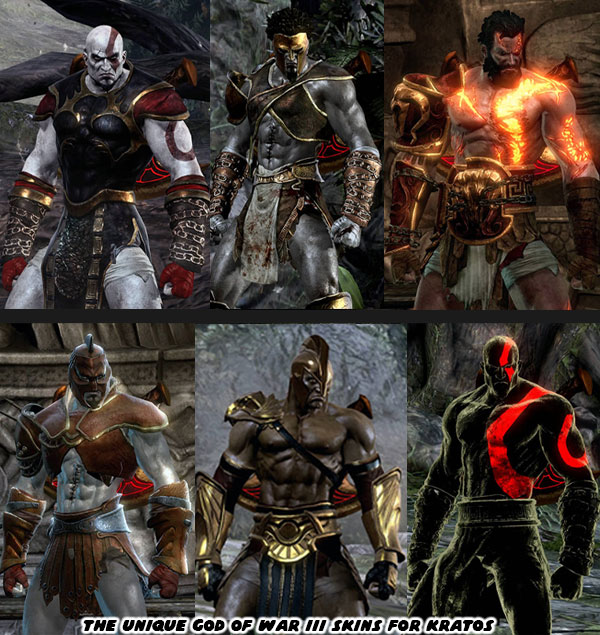
Being able to change the look of Kratos wasn’t something new. In the first game once you played through you could actually unlock new costumes for him. Some were armor that allowed him to take more damage, or deal more damage. Other outfits allowed him to gain faster experience, or have unlimited magic. Most of the looks made the Spartan look more dangerous, and some made him look silly, like a giant fish, or angry cow. Sony Santa Monica never took themselves too seriously. They had a sense of humor with the otherwise dark material. That was evident with the humor that went into the Twisted Metal series. The new costumes were actually a love letter to the franchise. Several of the skins were a nod to the earliest concept art for the character. Outfits like the Forgotten Warrior, Dominus, and Phantom of Chaos were based on the designs where Kratos was a helmeted, and almost faceless character. The warriors looked brutal, and they allowed audiences to wonder if the game would have been as successful had Kratos looked like this. One of the skins was Deimos, that of Kratos’ younger brother. Again, it allowed us to wonder if he could have carried the franchise as well.
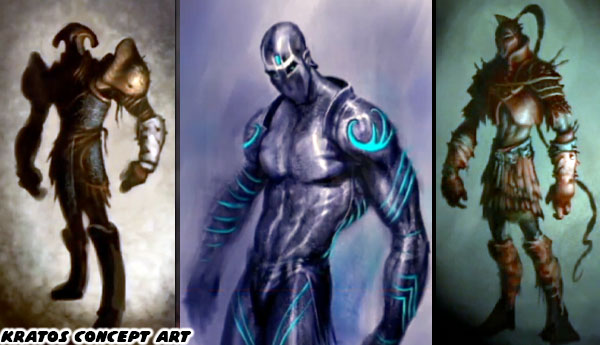
The original game introduced the Blade of Artemis about halfway through the story. It was a powerful close range weapon that played differently than the Blades of Chaos. It could also be upgraded, and allowed audiences to enjoy a different experience. God of War II expanded on that idea, and introduced multiple weapons; the Blade of Olympus, the Spear of Destiny, and the Barbarian Hammer. Each one also played uniquely as well, and had different features that could be unlocked by powering them up. GoW III followed the trend, Kratos had an upgrade in his traditional Blades of Chaos / Blades of Athena, to the more sinister Blades of Exile. The title also added the Nemean Cestus, the Claws of Hades, and the Nemesis Whip. These weapons not only added new game play elements, they were also required to overcome certain obstacles. As welcome as the new tools were they suffered from the same limitation as every other weapon. Audiences had to defeat enemies, and destroy items in order to earn the Red Orbs required to upgrade the Blades of Chaos, and the magic items acquired. They had no idea if these other weapons were superior to the Blades of Chaos, or would be needed to beat the game. Nothing felt worse than wasting red orbs on one weapon, or magic item, when a better one was around the corner. Not to mention that the Claws of Hades, and Nemesis Whip were weapons attached to chains, with a range not unlike the Blades of Exile. Having three similar items didn’t really feel necessary. That was the least of the reasons why I enjoyed the game less than the other GoW titles.

The difference between the earlier releases, and GoW III was the tone, and atmosphere of the game. The PS3 game was incredibly dark. It wasn’t the first time the team had created something bleak. For example the jump in tone from Twisted Metal on the PS, to Twisted Metal Black on the PS2 was huge. That series however always revolved around a band of psychopaths, cursed participants, demons, and apocalyptic settings. It made sense to push the envelope in the sequels. God of War was a different kind of game. It was an adventure with a lot of stylistic fantasy to it. God of War III was gritty, realistic, and just plain ugly by comparison. I don’t mean the graphics were bad. They were brilliant, but it chased a tone that was rooted in realism, rather than the more comic-type aesthetic of the previous two games. For example think of the presentation of the legendary heroes in the previous game. Characters like Theseus, and Perseus were very stylized. Their costumes, and weapons, just like their stages were bright, and colorful. They looked like action heroes in a comic book, or perhaps anime show. By comparison every costume, location, and hero in GoW III had muted colors. Their armor lacking polish, and upkeep. Their stages (and skin) were washed in a series of grays, and dull browns. These were conscious choices from the GoW III Director Stig Asmussen. Like
the yellow filters used by Hollywood when they wanted to depict Mexico, or Southeast Asia.
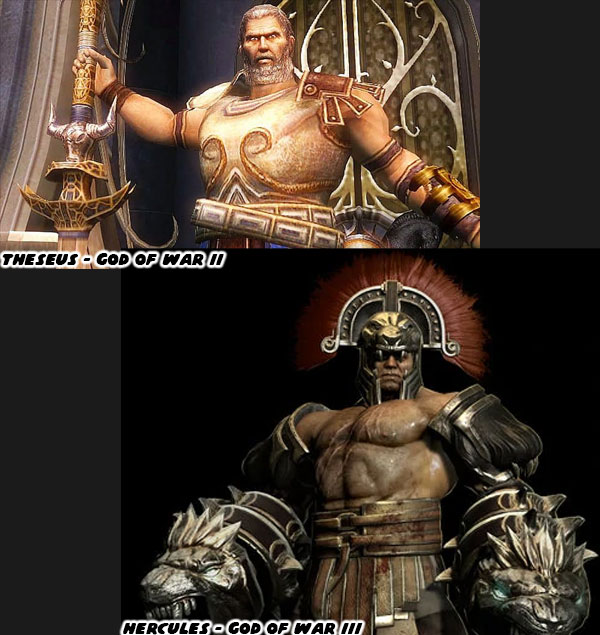
If I were to make a cinematic comparison between how the violence had changed, it was the difference between the gun fights in John Wick, over Training Day. One film was way over the top with the encounters, and the other was scary in its realism. Blood, guts, sex and violence has always been a part of the GoW franchise. Previously these things were almost cartoonish in presentation, including the decapitations, and sex mini games. They weren’t as shocking, as they were camp. This time Sony Santa Monica wanted to render every blood vessel, tendon, and muscle tear in vivid detail. We would be treated to a first-person view as Kratos beat Poseidon to death, and even blinded him by thumbing out his eyes. Kratos would inflict that type of brutality to every god that crossed his path. All of the H’s; Helios, Hercules, Hermes, Hades, Hephaestus, Hera, and lastly Zeus were gruesomely deposed. Every encounter was uglier than the one before. God of War II was in part a love letter to Clash of the Titans. The studio went so far as to reprise Harry Hamlin as the voice of Perseus. Although he was defeated by Kratos it was a quick kill, and not overly gory. The inclusion of Hamlin felt like an earnest call back to what the actor meant to a generation. In GoW III the voice of Hercules was performed by Kevin Sorbo. The actor had played the titular role for six seasons in Hercules: The Legendary Journeys. The show ran almost a decade before GoW came out, and had built a cult following. This was especially true for the spin-off series Xena Warrior Princess. But I digress. Having Sorbo voice a larger, darker version of the character didn’t necessarily carry the same sense of admiration for the role. This was especially evident as Kratos literally punched the face off of the hero.
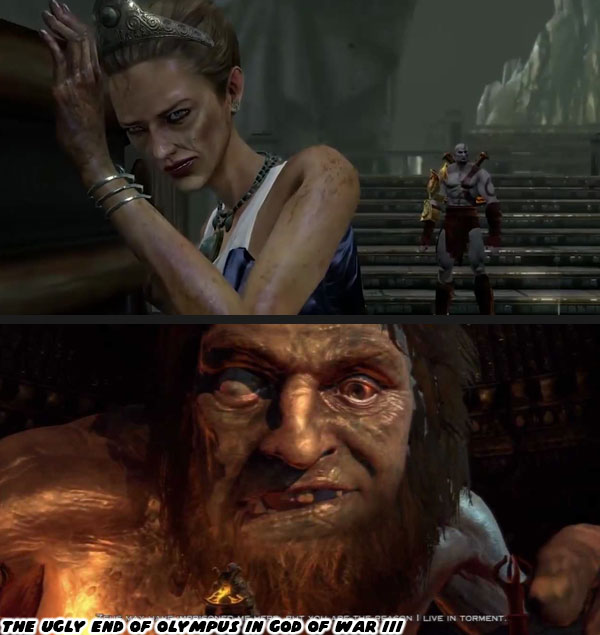
Kratos had obliterated most of the classic villains, and even some of the heroes from mythology throughout the years. He destroyed several cities in the process, ended the Greek pantheon, and wiped older traditions off the face of the Earth. It was an impressive feat, but the way things closed out in GoW III felt poorly executed. From a storytelling perspective the game felt like a rush to wrap everything up. Every previous GoW title had Kratos travel across the Mediterranean. We saw actual historic locations, as well as many fantasy settings. We even got to visit the afterlife during the adventures. Even if the trip went full circle it at least felt as if we had gone on an expedition. GoW III was anything but a journey. The entire game took place on Mount Olympus, and sadly not the cool golden Mount Olympus seen in the ending of the first game. This Mount Olympus felt like going room to room in a big house. Each room getting progressively darker until the lights went out. When I think of GoW III the only thing I imagine is a giant chain that connects the beginning, and end. You’re either climbing, flying up, or down through this chain when you'd rather be doing anything else. To be fair we did visit Hades, and Tartarus, but that just feels like we’re going into the basement, and sub basement of the same mountain. I felt like the graphic horsepower of the PS3 was wasted by staying in one area. Forcing everything to happen in a centralized location was something that I felt really hurt the experience.
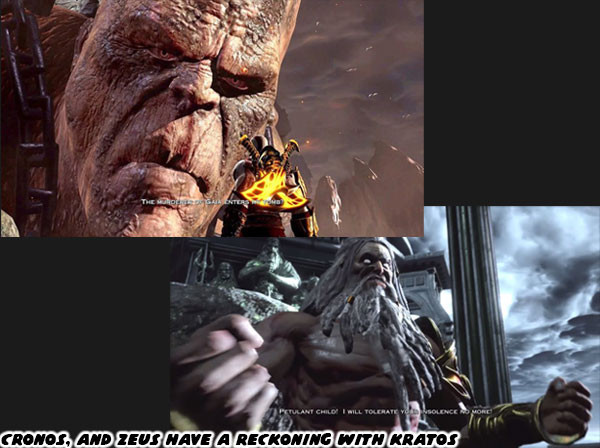
Then there were the issues that I had with the story. Kratos was repeating the cycle of those that came before him. This was to be expected since he was a tragic character, and Sony Santa Monica was following the storytelling tradition. For perspective Cronos had freed the titans when he gutted his father Uranus. Zeus had freed his brothers when he gutted Cronos. Now Kratos was on a mission to destroy his own father as well. The moral being that Kratos didn’t just want to get revenge. He wanted to end the cycle he was born into. It was a theme that would be revisited in the 2018 version of God of War. Kratos had no family to free, and with the death of Athena not even a friend to lean on. If he died on his quest for revenge then it seemed fine with him. It wasn’t just a story of revenge however, but rather the erasure of the old religions. It was a bold narrative, but it was delivered with a heavy hand. For the first time in the series Kratos lacked pathos. In other games he showed a range of emotions. He was angry, but despondent in the first, arrogant, but also regretful in the sequel. All he had was rage in the third. It wasn’t realistic anger, but exaggerated rage to a fault. He was written almost one-dimensional in GoW III. He was too short of temper with no redeeming factors. He would fly off the handle at every insult thrown his way. We were used to his anger by now, but every line delivered lacked the range that T.C. Carson was known for. It was all moping, and seething with no substance. All of the good writing in the game went to Pandora, as played by Natalie Lander.
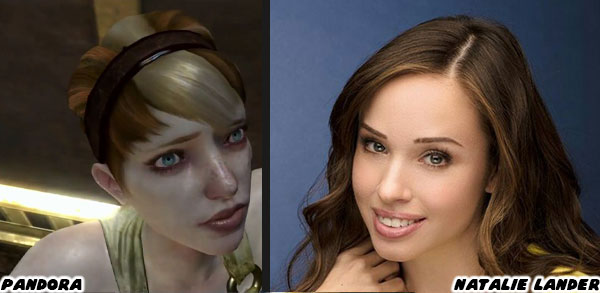
The young daughter of Hephaestus was locked away in the labyrinth within Mount Olympus by Zeus following the events of the first GoW. This history was explained to Kratos from several of the other gods. Kratos seemed indifferent, and dismissive of Pandora through the majority of the game. He insisted over, and over that all wanted was the death of Zeus, ignoring what Pandora was trying to explain to him. This seemed out of character for the Ghost of Sparta. Long-time fans knew that he regretted killing his wife, and daughter every day of his existence. He wouldn’t necessarily be cruel to another girl whether she was god, or not. He didn’t change his tone towards her until the very end of the game when she had to sacrifice herself. Kratos seemed too dense in understanding that Pandora offered hope to the world. When all of the ills were released by opening the box in the first game, the thing that remained was hope. That part of the story felt like a stepping stone for the grand finale which was Kratos, and Zeus beating each other to a pulp. The last cinema ending of Kratos stabbing himself after defeating Zeus, and then vanishing seemed anticlimactic. I got that Sony didn’t want to give up their cash cow, but the whole game was so dark, and ugly that I felt it betrayed the greatness of the first two titles.
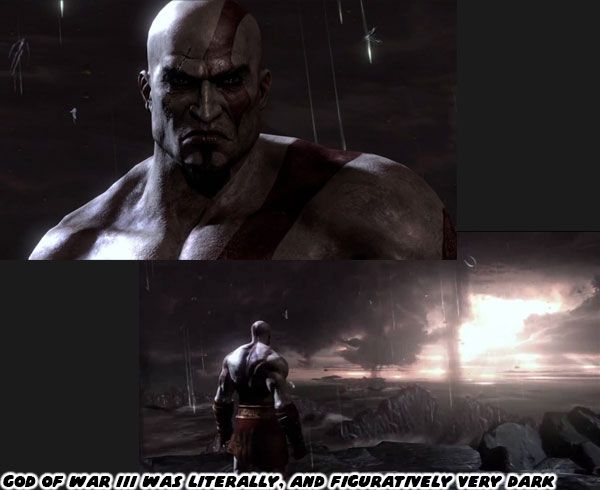
Had that been the last time I played an entry to the series I would have been sorely disappointed. I did not own a PSP so I had no idea if the handheld games were any good. Thankfully they were ported to the PS3, and given some visual, and control polish. When I played those games I had a newfound love for the series. I’m going to do a deep dive into them next. Until then I’d really like to hear your take on God of War III. Did you think it was the best entry in the series? What did you like, or dislike about the game? Let me know in the comments section please. As always if you would like to sponsor me
please visit my Patreon page and consider donating each month, even as little as $1 would help make better blogs and even podcasts!
